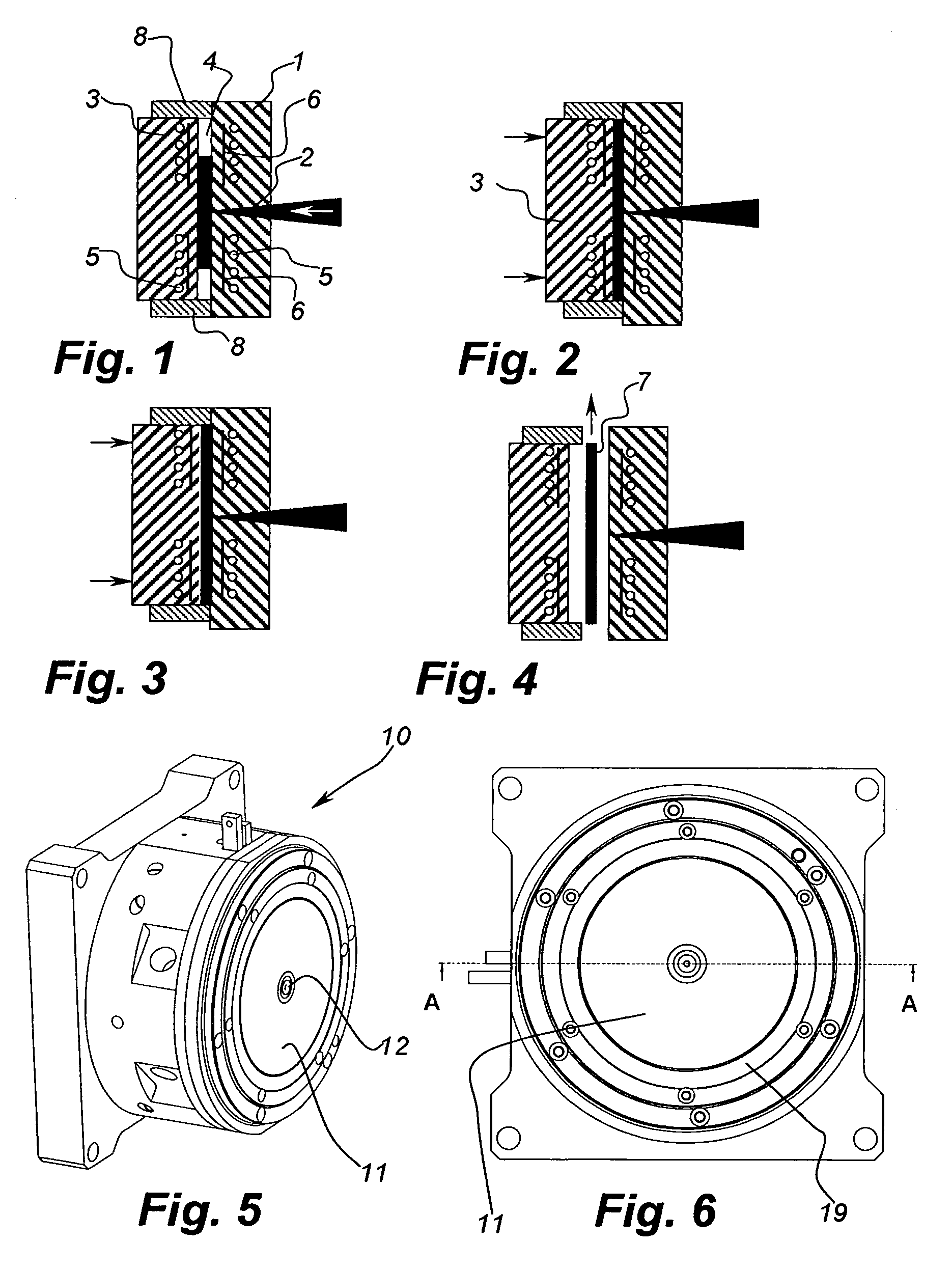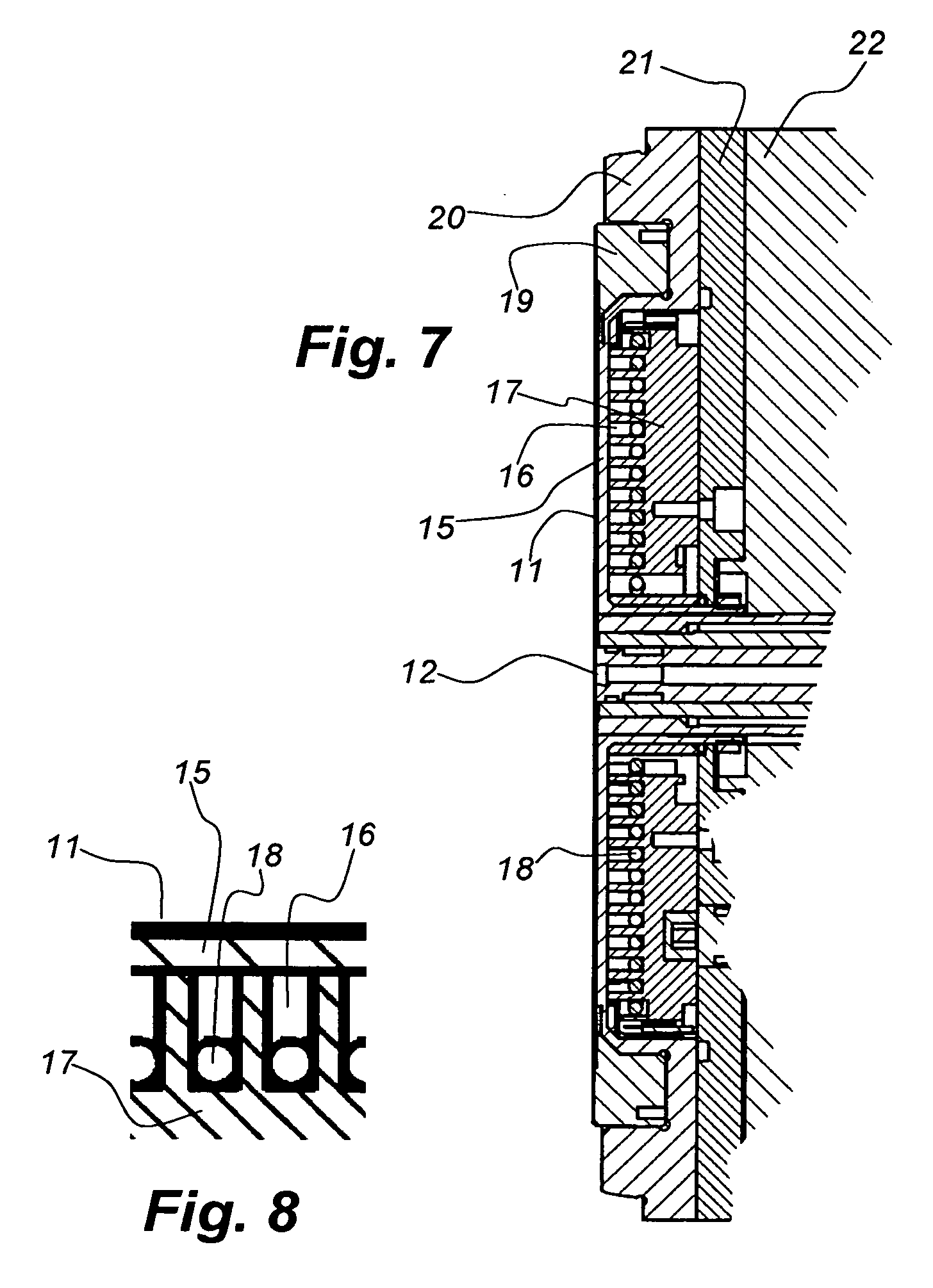Moulding Device and Method
a moulding device and injection moulding technology, applied in the field of injection moulding devices and injection moulding methods, can solve the problems of limited temperature of moulded resin, long cooling time needed, and known injection moulding machines with inductive heating mould parts, etc., to achieve efficient production, reduce cooling flow, and increase heating efficiency
- Summary
- Abstract
- Description
- Claims
- Application Information
AI Technical Summary
Benefits of technology
Problems solved by technology
Method used
Image
Examples
Embodiment Construction
[0036]There will now be described examples of injection-moulding devices.
[0037]FIGS. 1-4 describe schematically steps in an injection-molding process utilizing an injection moulding device. More particularly, an injection compression cycle is schematically illustrated.
[0038]In the injection-moulding device, a first mould part 1 is fixed and comprises a resin injecting nozzle 2, which is fed by an extruder. Together with a second, moveable mould part 3 and a sub-part 8 on the second moveable part 3, the first mould part forms a cavity 4. The first and second mould parts further include means, in the form of coolant ducts 5, for cooling the mould parts in the vicinity of the cavity 4. Additionally, the first and second mould parts 1, 3 include means, in the form of inductor coils 6, for heating the mould parts in the vicinity of the cavity 4.
[0039]In the injection step, illustrated in FIG. 1, the heating means 6 are activated so as to heat the mould parts 1, 3 while hot resin is injec...
PUM
| Property | Measurement | Unit |
|---|---|---|
| Fraction | aaaaa | aaaaa |
| Electrical resistivity | aaaaa | aaaaa |
| Width | aaaaa | aaaaa |
Abstract
Description
Claims
Application Information
 Login to View More
Login to View More - R&D
- Intellectual Property
- Life Sciences
- Materials
- Tech Scout
- Unparalleled Data Quality
- Higher Quality Content
- 60% Fewer Hallucinations
Browse by: Latest US Patents, China's latest patents, Technical Efficacy Thesaurus, Application Domain, Technology Topic, Popular Technical Reports.
© 2025 PatSnap. All rights reserved.Legal|Privacy policy|Modern Slavery Act Transparency Statement|Sitemap|About US| Contact US: help@patsnap.com



